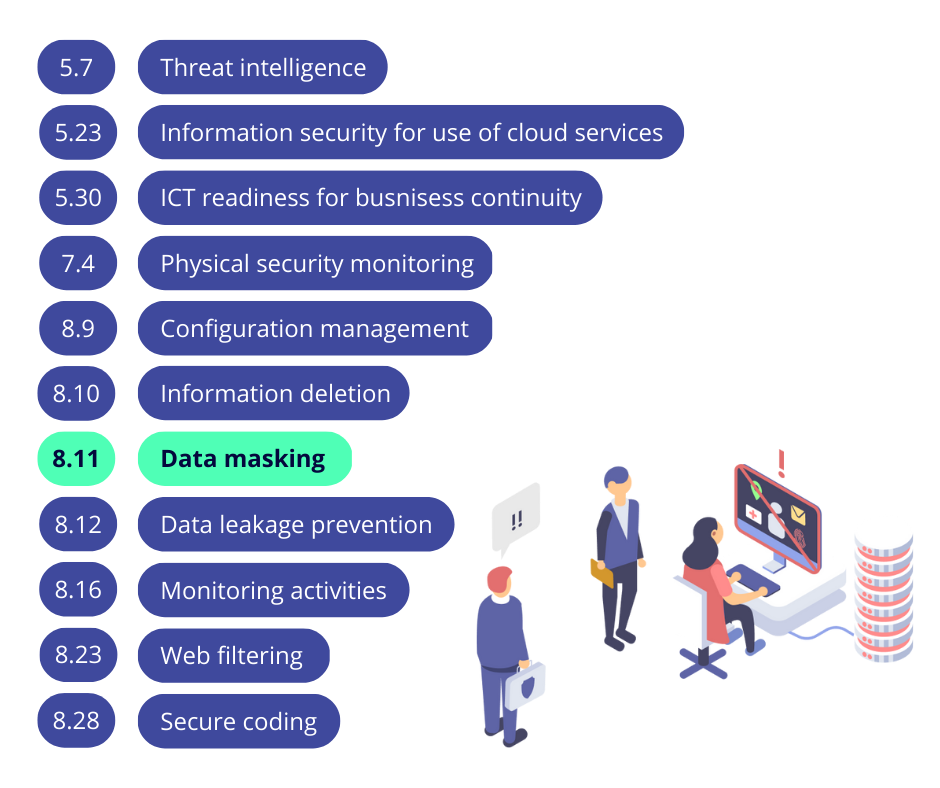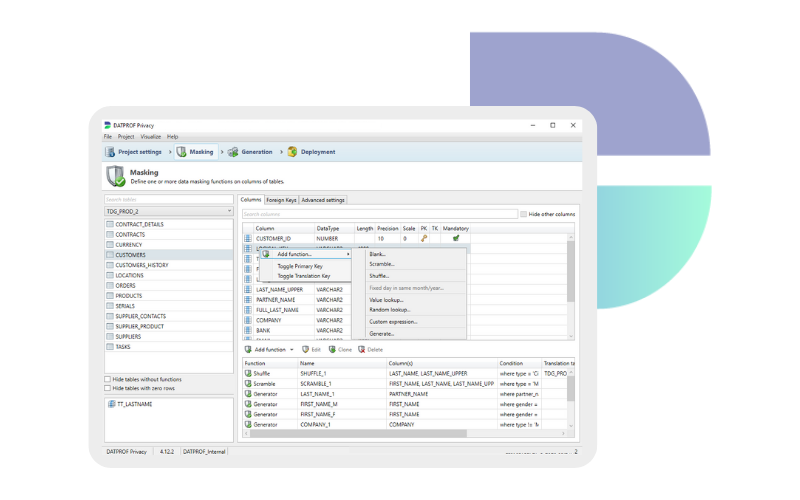Data Masking for ISO 27001 Certification and Data Privacy
As organizations increasingly rely on technology to store and process sensitive information, the risk of data breaches and cyber-attacks also grows. To address these risks, many organizations turn to the ISO 27001 standard, which outlines the requirements for an Information Security Management System (ISMS) to manage information security risks and protect valuable information assets.
What is ISO 27001
ISO 27001 is the leading international standard that organizations can use to protect their information from being stolen, hacked or leaked. The standard includes creating a system to manage and reduce risks to information security, which helps to keep important information safe. It helps organizations of all sizes and industries to improve their security posture, demonstrate their commitment to information security, and achieve competitive advantage.
The latest version of the standard, ISO 27001:2022, has been published on October 25, 2022. This version includes updates and revisions to the existing standard, reflecting changes in technology, data privacy regulations, and security threats. The updated standard focuses more on risk-based approaches to security management and provide more specific requirements for data protection and privacy.
Data masking for ISO 27001:2022
One crucial new control in ISO 27001:2022 is Control 8.11, which requires organizations to implement measures to protect personal information that is processed or stored in non-production environments, such as development, testing, or training environments. These environments often have less strict security controls than production environments, making them vulnerable to data breaches or unauthorized access.

Implementing data masking in non-production environments is a particularly effective way to protect personal data. Data masking replaces sensitive data with realistic but fictitious data, making it meaningless to unauthorized individuals or systems. This enables organizations to safely use non-production environments for development, testing, or training without exposing sensitive data to unnecessary risk.
Data masking is critical to achieving ISO 27001 compliance and data privacy. By masking sensitive data, organizations can protect themselves from data breaches, comply with regulatory requirements, such as GDPR and CCPA, and demonstrate their commitment to protecting personal data.
Best practices
In addition to protecting personal data in non-production environments, data masking has several other benefits for organizations. For example, it can help organizations streamline their data management processes, reduce storage costs, and improve data quality. By replacing sensitive data with realistic but fictitious data, organizations can use this data for other purposes without worrying about exposing sensitive information.
Implementing data masking can be challenging, especially in large organizations with complex data environments. However, there are several best practices that organizations can follow to ensure successful implementation. These best practices include:
1. Identifying and classifying sensitive data
Organizations must first identify all sensitive data that requires masking and classify it according to its level of sensitivity.
2. Developing a data masking strategy
Organizations should develop a data masking strategy that outlines the data masking techniques, tools, and processes to be used.
3. Testing and validating data masking
Organizations should test and validate data masking to ensure that the masked data is still realistic and usable.
4. Monitoring and auditing data masking
Organizations should monitor and audit data masking to ensure that it is working effectively and that sensitive data is properly protected.
Conclusion
In conclusion, data masking is an essential control for ISO 27001 compliance, data privacy, and data security. By implementing data masking in non-production environments, organizations can protect personal data, comply with regulatory requirements, and improve their overall data management processes. While data masking can be challenging to implement, following best practices can help organizations achieve successful implementation and reap the benefits of this critical control.
Need any help or advice?
Book a free 15-minute expert session to discuss your data masking needs.
Book a meeting
Schedule a product demonstration with one of our TDM experts

